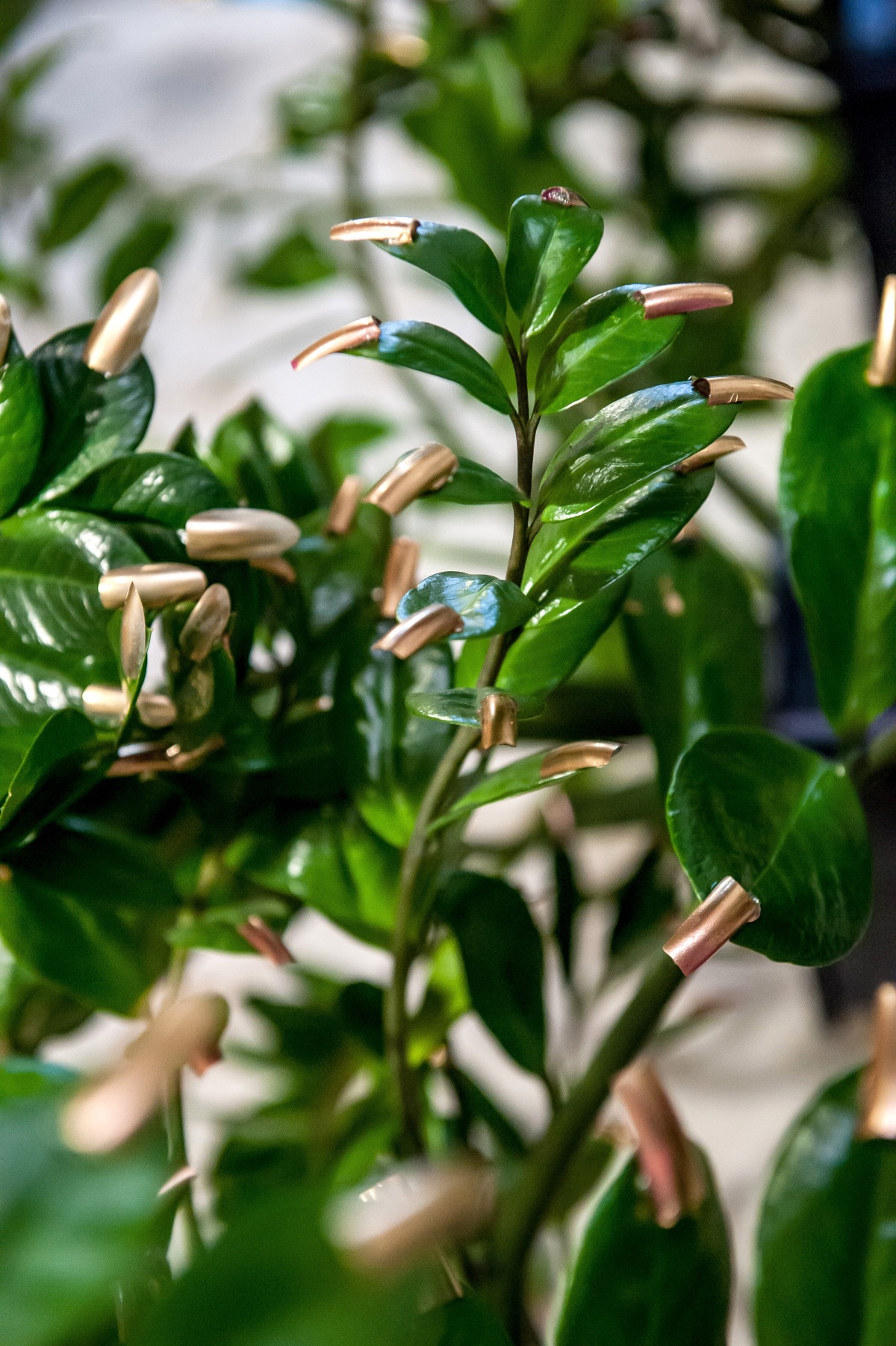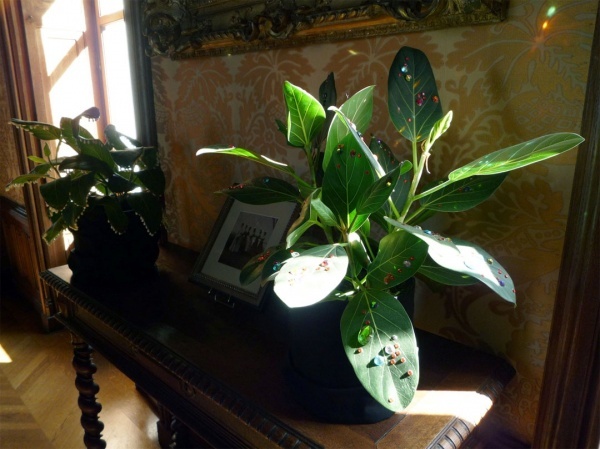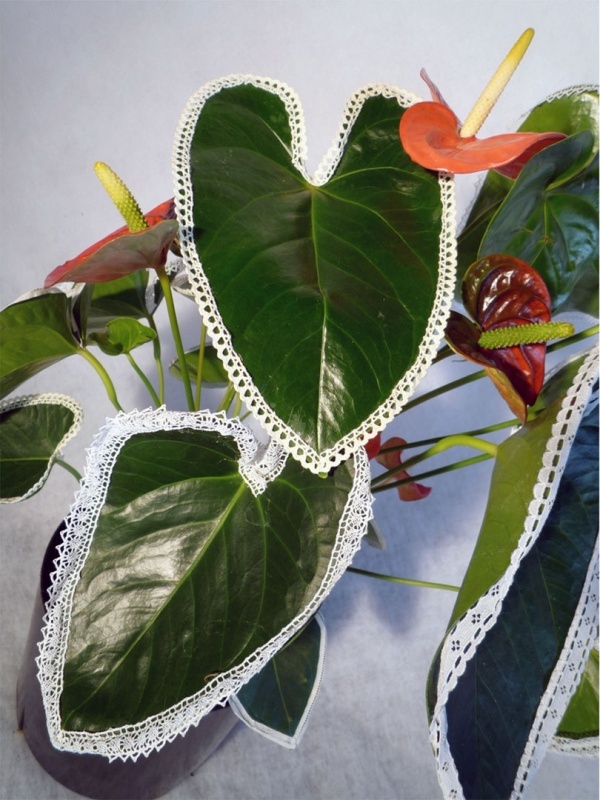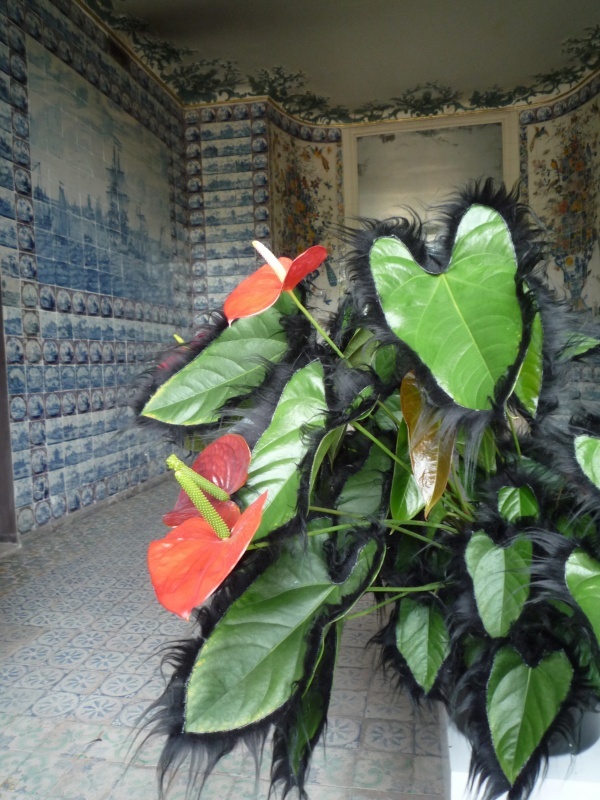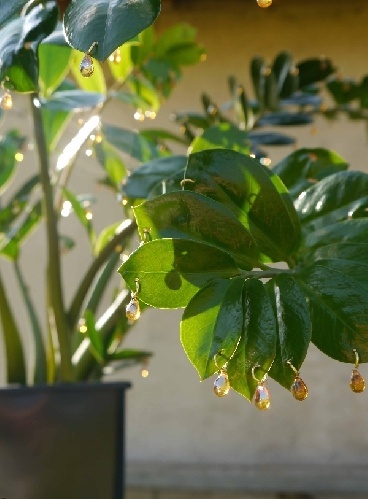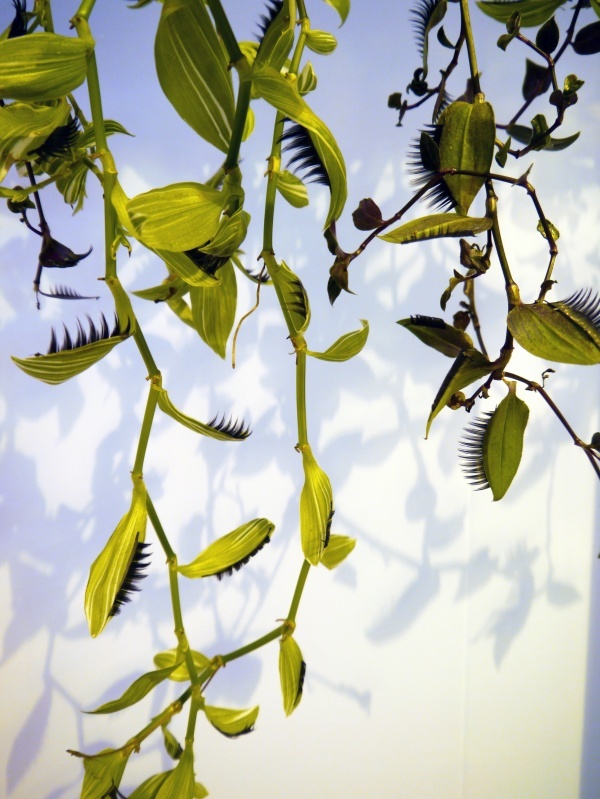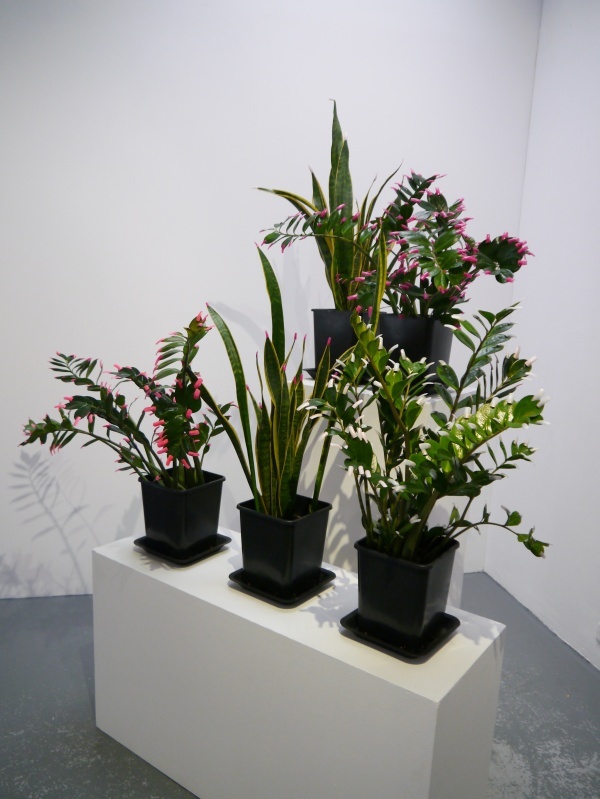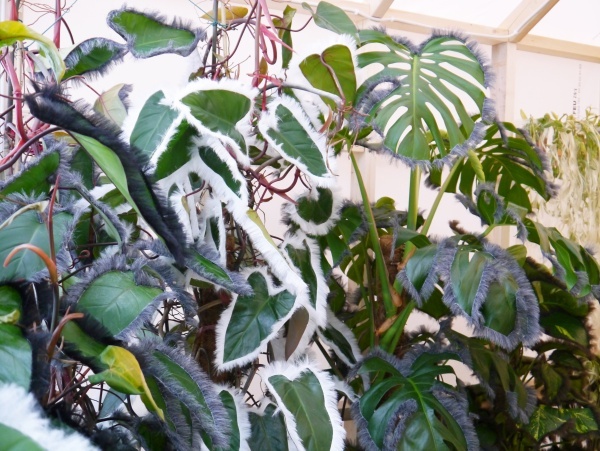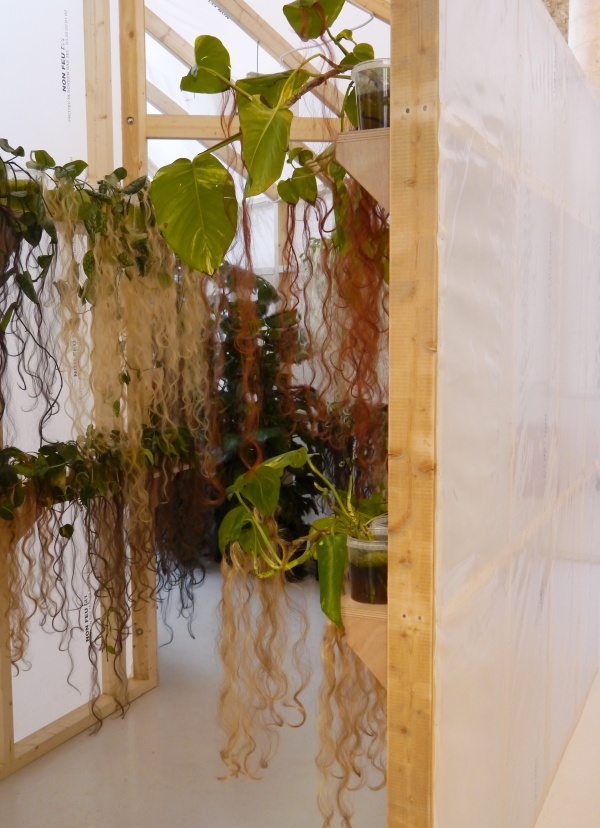phylloplasties, 2009
The Phylloplasties were born of a reflection on botanical greenhouses, which for the artist are the embodiment of our desire to control nature. Plants discovered in primary forests by the great explorers of the 18th century were brought back to France and preserved in artificial glass microcosms.
A neologism coined from the ancient Greek word for leaf and the ending plastie, as used in plastic surgery - these are plants augmented with artificial additions, a derisory and violent attempt to bring exoticism back to living plants that have become commonplace objects. Plants that have been colonized, but which adapt and continue to live and grow.
Karine Bonneval's project is based on the manipulation of living things by humans. Her plastic research is rooted in the notion of the exotic.
In the age of curiosity cabinets, then greenhouses, plants were acclimatized in the West to form the basis of botanical gardens. These travel treasures were collected and inventoried, bearing direct witness to man's stranglehold on nature and Europe's power over so-called indigenous countries. These harvests are also the expression of a search for sensations and pleasure. The colonization of the living world, as recounted in travel accounts, remains a topical issue. Today's explorers are just like the big pharmaceutical and agri-food groups who appropriate natural species to transform them into industrial products. Likewise, on a smaller scale, and without our even being aware of it, the plants in our gardens and interiors most often come from faraway lands, responding to our need for plants as a bulwark against our own society.
